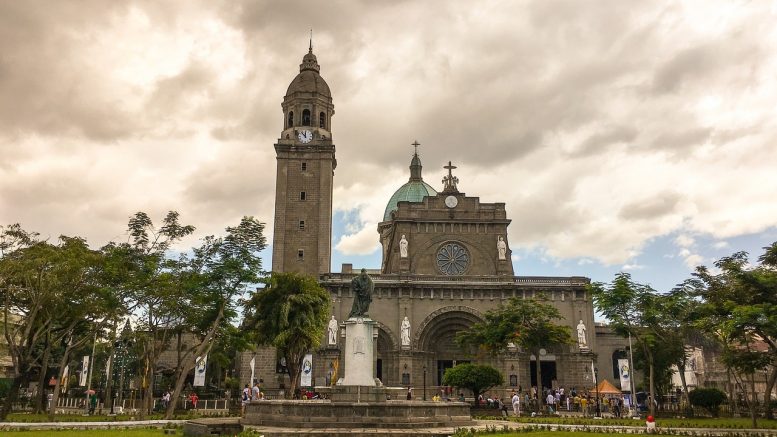by Fed Up Texas Chick, The Tenpenny Report:

COVID-19 was not the world’s first rodeo. Did we learn anything from past pandemics, or are we doomed to repeat history?
Just outside the Manila Cathedral in Intramuros, Philippines, a statue of Spanish King Charles IV looms over the square. The monument was built in the 19th century to honor Charles for bringing the smallpox vaccine to the small nation. In the early 1800s, a Spanish expedition arrived in the Philippines, and the ship was carrying 25 orphaned Mexican boys who were infected with smallpox. Historical accounts paint this as an accidental exposure. Was this an unfortunate accident, or was it planned? After all, the Spaniards purposefully introduced smallpox to the Americas in the 16th century. The disease wiped out 25 million Aztec, Mayans and Incans, decimating the once great empires.
TRUTH LIVES on at https://sgtreport.tv/
In the early 1800s in the Philippines, the governor general soon took control of the situation. He formed the Junta de Sanidad (Council for Health) and in turn, the council created positions for vacunadores (vaccinators) who would convince (coerce) the public to be vaccinated. The governor general even had his own children injected with the smallpox vaccine so that citizens would not fear vaccination.
The Philippines was not only ravaged with smallpox but also with deadly cholera. Significant death occurred between 1820 and 1882, so much so that Manila had to open a new general cemetery, the Cementerio General de Dilao. As with many pandemics, the Philippines imposed quarantine measures and improved sanitary conditions. They also established a welfare program for those adversely affected, of which there were many.
In the early 1900s, the US imposed forced vaccinations on the native Filipino population. How did the US get involved? This was a result of the Spanish-American War in which President William McKinley issued an ultimatum to Spain; declarations of war ensued when McKinley decide to capture the Philippines from its colonial Spanish oppressors. The result was a nearly decade-long military government led by the US. Interestingly, the US made Filipino healthcare its top priority, and created the Military Board of Health which implemented strict vaccination of the populace. By 1914, an estimated 18 million Filipinos were vaccinated against smallpox and other diseases.
During that time, the natives were forced to take smallpox vaccines. Prior to vaccination, the case mortality was about 10 percent, but after vaccination, it was 30 percent. In 1918-1919, despite the fact that over 95 percent of the population was vaccinated, the Philippines suffered its worst-ever smallpox pandemic. The deaths were three times higher than they had ever been, with death rates as high as 60 percent in some areas, compared to a previous 10 to 15 percent rate.
 It Happened Elsewhere, Too
It Happened Elsewhere, Too
This is a story that repeats itself time and time again. Not only did it happen in the Philippines, around the same time, a smallpox epidemic happened in Leicester, England. Despite a 95% vaccination rate, which the town bragged about, Leicester suffered more deaths than London, where there was a less vaccinated populace. Leicester was faced with the obvious evidence that the vaccines were useless, and their citizens rejected further vaccine mandates and instead improved the city’s sanitation. After these new measures were in place, they had about 20 cases of smallpox per 10,000 people.
Read More @ TheTenpennyReport.com



